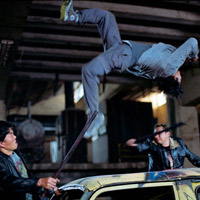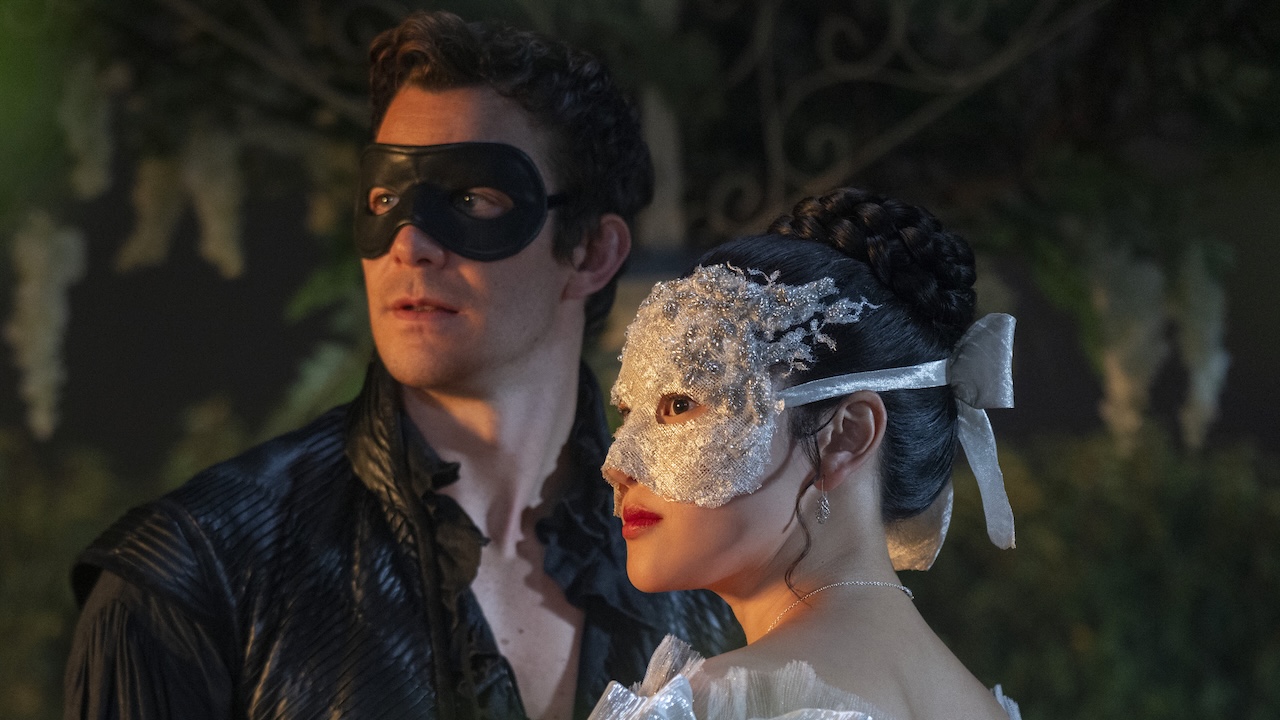Interview: Tony Jaa

After decades of dominance in the martial arts cinema, Hong Kong was upstaged when Thai performer Tony Jaa burst onto the scene with Ong Bak. With his Muay Thai style packed with knees and elbows, he totally reinvented the kicks and punches. With his second starring vehicle, The Protector, Jaa invented still fresher moves, based on the film’s story of defending Thailand’s sacred elephants.
“This movie is actually based on a move from Muay Thai combination with the elephant,” said Jaa through his studio provided translator. “It’s kind of like catch, throw and break. This is one of the themes that I use in the movie.”
You might think there are only so many ways you can beat people up, but Tony Jaa is determined to maintain the art in martial arts. “I always think about new moves and studying almost unlimited to me. So I’m constantly thinking of new moves for my next movie all the time. It really comes naturally for me because martial arts is what I do. Over time with practice with stuntmen, sometimes it just comes naturally. Like this move should come later and this comes with an elbow or a knee, while training with stuntmen.”
Right now, his favorite move comes from his latest film. “In the movie The Protector, the move of the elephant where they use the hands, so then I used the other move when I used the foot to represent the tusk pulling down people, and then using the trunk compared with the leg.”
Obviously, Tony Jaa’s moves are deadly. It’s more surprising to imagine how he does not kill his costars than to think that he could end your life. Would you imagine that it hurts Jaa as much as it would hurt you?
“It’s more of a mutual hurtness from the one who gets kicked and myself, but nobody goes to the hospital. No fatal accidents. Only just bruises and bumps. Because the actors are wearing safety guards under their shirts so a lot of times when I kick them, I have to do another take and I kick them again, sometimes doing that repeatedly hurts too.”
Jaa also seeks out opponents who could potentially be better than him, to create the most challenging fight scenes. “It’s really good if that opponent comes up because I feel it’s good competition, and it feels pumped up to find somebody equal or better than me so I can improve.”
Your Daily Blend of Entertainment News
The film’s big set pieces all took weeks of shooting and preparation. One standout fight between Jaa and X-game athletes gave Jaa a move he almost couldn’t do. “In that scene there’s a lot of moves that are really difficult, but the one move is kind of like the lizard move where I have to flip and stick to the wall on my hands. If I don’t do that correctly, I can fall down on my head. That’s the most difficult one. I did it five times and I could only hang on in three. For that, we did stacks first and tried to do it, then took one out of the stack and did it again, until there were no stacks so I could do it sticking to the wall.”
Another fight scene runs a continuous four minutes with no cuts, just a long tracking shot while Jaa takes down multiple levels of bad guys. “So for the long scene it took, preparation and everything, about one month for everything and about eight takes to do it. So there was a lot of difficulty in this take because we had to change the cameraman because the first cameraman couldn’t catch up with Tony Jaa. So we changed to someone more fitter. And one scene, when they got to the third level, we were going to throw out one of the bad guys but the safety crew wasn’t there, so they had to cut. And there was another scene that everything was perfect but the film ran out. So that was a really frustrating take for Tony Jaa. And for one day, Tony can take two takes because there are so many preparations. And I have to do it within four minutes. I feel like I’m in the Olympics.”
Jaa even worked with elephants in the film’s opening scenes. “Actually, we needed to find an elephant that is most used to people around them, so we chose the one that was most used to people and did mostly other movies. I had to be around, hang around the elephant for a week so that they’re more familiar with my scents, my presences, my body being on them. Actually, for myself, it’s really familiar because I have two elephants myself at home because my family owns a lot of elephants from my ancestors.”
With all his time spent creating the wonderful violence of his films, he has struggled to find time to learn film acting. “I am learning two ways right now. One is inner acting, what we believe about the character and what is his mindset. And actually learning acting outside, while I’m doing martial arts. It’s really hard to study right now because both combinations together. Right now I have a teacher that teaches acting two-three weeks before the movie starts.”
With only two movies completed, there’s still not enough Jaa to satisfy fans. A DVD premiere could tide us over a little bit with Jaa in a supporting role in The Bodyguard. “For that movie, I’m just a supporting role, not the main character. So that really is not my movie, just like when Jackie Chan says hello, goodbye, a guest appearance. There’s one scene that I come in and help the main character which is my costar in The Protector. It’s fun because when I work I want to give the whole 100% for every movie.”
Next up for Jaa is the official sequel to Ong Bak which he is directing as well as starring in. Jaa is cagey about any details. Making an American movie is still a long way off. “Even in Thailand, we almost didn’t get the insurance for the movie. Eventually we did so I’m kind of worried about that too in America.”
The Protector opens Friday.
